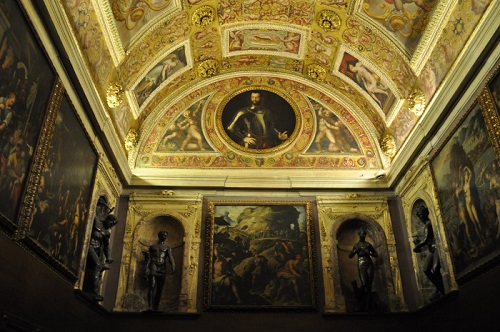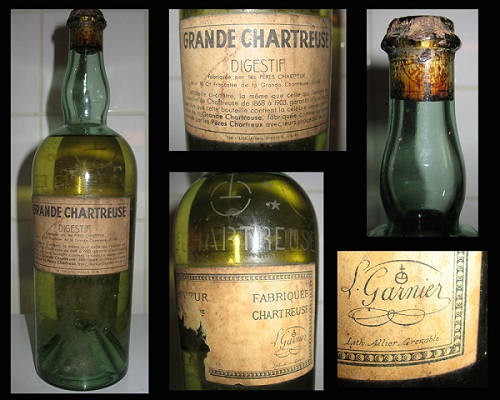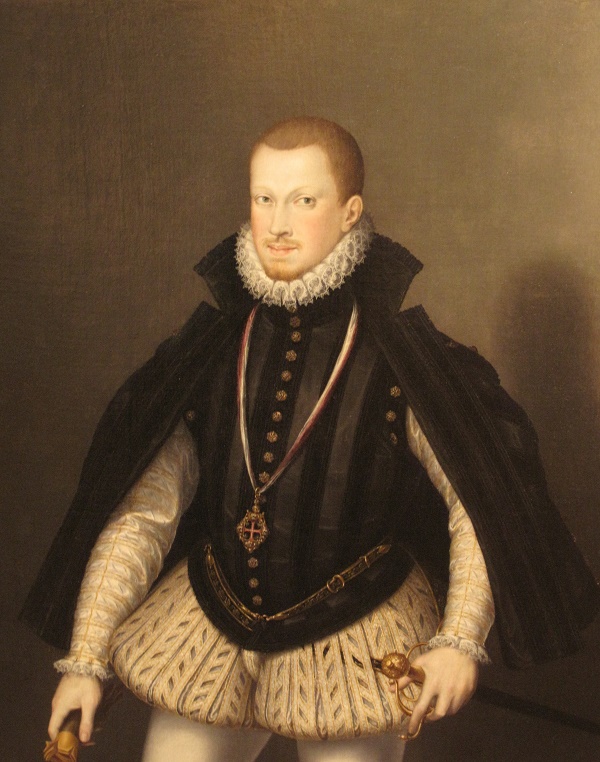
Francesco I de Medici (Florence, 1541-1587) commissioned a special Studiolo within the Palazzo Vecchio. The decoration was in part the work of the most famous Mannerist painter of the day, Giorgio Vasari, who was commissioned to oversee the entire project (1570-72), with the assistance of humanist scholars Giovanni Battista Adriani and Vincenzo Borghini.
The Studiolo is actually divided into two parts – a study proper and an alchemical laboratory, the latter being a sort of wunderkammer in which Francesco I, who had little taste for politics, often took refuge. It is said that the prince would here engage in alchemical experiments or else delight in his collection of rare objects, all within a space that was decorated with a series of large format paintings from his collection. The walls were, in fact, adorned with 34 paintings, mostly of religious or mythological themes. Other works included Mirabello Cavalori’s Wool Workshop and Giovanni Battista Naldini’s Allegory of Dreams which undoubtedly reflects the interior of Francesco’s nearby bedchamber. Pride of place went to a portrait of the duke’ mother, Eleonora of Toledo, painted by Bronzino.
Soon after Francesco’s death, his brother and heir, Ferdinando I, had the place dismantled (1590) – so completely that all trace of it disappeared. However, in the twentieth century it was “reassembled” after surviving traces of the ceiling frescos made it possible for Giovanni Poggi (Superintendent of the Cultural Heritage in Tuscany) and Alfredo Lesni (Head of the Florence City Arts Department) to identify the original room in 1910. Miraculously, it was possible to restore the 34 paintings that had decorated the walls, together with either sculptures in bronze.
Part of Francesco’s commission to Vasari was for paintings of the four natural elements (Earth, Water, Fire and Air), upon which alchemists worked whilst pursuing their explorations of Natural Philosophy within their laboratories. It is however, unlikely that Francesco actually performed alchemical experiments here; the place is much better suited to the reading of alchemical texts, which is doubtless what he did rather than perform any actual experiments. However, the duke left a precious collection of paintings inspired by the theme of alchemical practice – in particular the ceiling decorations of Prometeo che riceve I gioelli della Nature [Prometheus Receiving the Jewels of Nature]. Painted in 1570 by Francesco Poppi, this work shows Nature bestowing Prometheus the “quintessence” necessary for the creation of the Philosopher’s Stone. The image symbolises the creation of the Perfect Man, who is endowed with a Spirit enlightened by the Flame of Reason – the torch of which is associated with both Prometheus and Lucifer. Another work, by Vasari, depcist Perseus and Andromeda, the Greek myth which alchemists took to symbolise the hermetist disciple (embodied by Perseus) triumphing over the deficiencies of his lower nature, vanity in particular. As a result of this victory, the disciple is able to sue the sword of true justice to free himself and hence reveal the higher, immortal nature of this soul (represented by Andromeda).
The 1572 painting of Atalanta and Hippomenes by Sebastiano Marsili symbolises the disciple pursuing the primary material for the alchemical Magnum Opus, a theme which was the starting-point of a treatise on alchemy written in 1617 by German alchemist Michael Maier (1568-1622) with the Latin title Atalanta fugiens (Atalanta in Flight). Hence, this association was a standard of Renaissance Hermetism.
Francesco I’s reputation is such that it is difficult to argue that he possessed the virtues of a true disciple of alchemical philosophy. On the contrary, he is remembered as a despot. Whilst Cosimo I (who was also interested in alchemy) had managed to preserve Florence’s independence, Francesco behaved as a vassal to the Hapsburg Holy Roman Emperor, imposing taxes upon his subjects in order to pay substantial sums into the imperial coffers. If is even said that his death was due to poisoning.

A fascinating piece of history and a wonderful collection of art…..
(Adapted from Secret Florence by N. Rinaldi)










